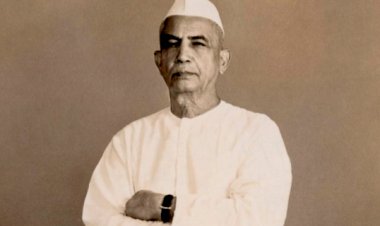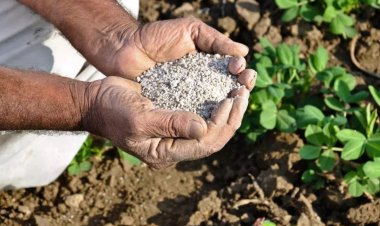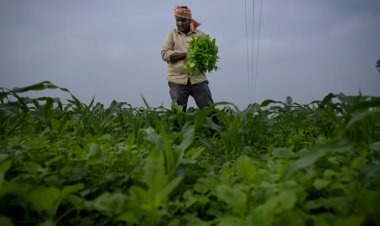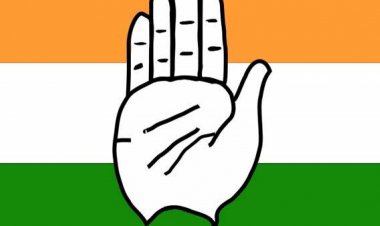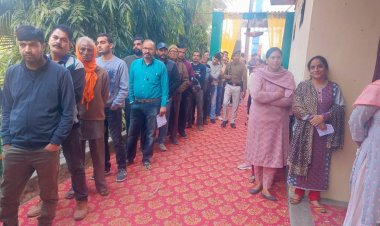Agriculture gets what it already had; no major scheme or allocation
There were expectations that the Budget would come up with some major provisions for agriculture and allied sector, for it had witnessed a positive growth of 3.4 per cent in the current year while the overall economy had shrunk by 7.7 per cent and also in light of the ongoing farmers’ movement in the country. The illusion lasted for the major part of the Finance Minister’s Budget speech. She did mention doubling the farmers’ income and also that the government had assured farmers of a Minimum Support Price (MSP) at least 1.5 times the cost of production of the crops. But she did not announce any major provision under any of the heads.
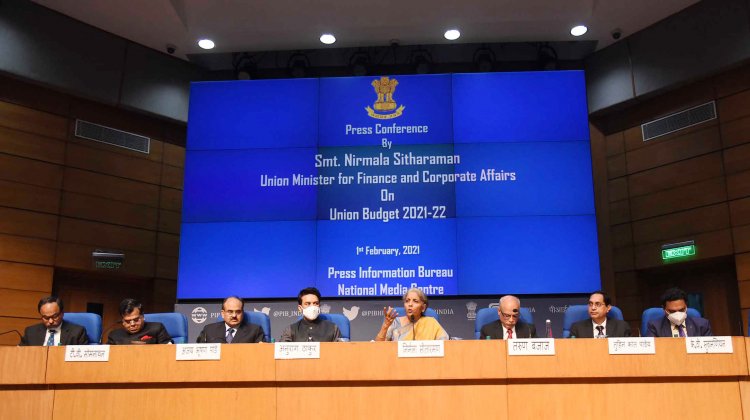
When Finance Minister Nirmala Sitharaman was presenting the Union Budget for the coming year 2021-22 in Parliament today, a large population of the country and experts had their eyes on her that the Budget would come up with some major provisions for agriculture and allied sector, for it had witnessed a positive growth of 3.4 per cent in the current year while the overall economy had shrunk by 7.7 per cent and also in light of the ongoing farmers’ movement in the country. The illusion lasted for the major part of her Budget speech. She did mention doubling the farmers’ income and also that the government had assured farmers of a Minimum Support Price (MSP) at least 1.5 times the cost of production of the crops. But she did not announce any major provision under any of the heads. However, she did impose a cess of Rs. 4 per litre on petrol and Rs 2.25 per litre on diesel. Which would lead to a big increase in revenues for the centre.
The figures that came up after the Budget speech have made it clear that only token changes have been made under various heads of the agriculture and allied sector in the Budget, and the budgetary allocation for this sector has reduced by Rs. 6,474 crores instead of witnessing an increase. The budgetary provision for the agriculture and allied sector had been made for Rs. 1,54,775 crores in the Budget for the current year. Which has been estimated at Rs. 1,45,355 crores in the Revised Estimates (RE). The Budget Estimates (BE) for the new financial year (2021-22) have pegged the allocation at Rs. 1,48,301 crores. The reduced allocation for the next financial year has been made on the basis of calculations done in light of the fact that the expenditure in the RE has been estimated to be higher on some schemes and heads than the BE and lower on others. This step has also been taken for subsidy and other aid packages.
Going by the allocations and announcements made in this Budget, it may only be called one of status quo. However, one can see an additional emphasis on animal husbandry in this Budget. In fact, speculations had been made that the government may increase the Pradhan Mantri Kisan Samman Nidhi (PM-Kisan) corpus to allay the resentment of the farmers. But this has not come true. The government had provided Rs. 75,000 crores for this scheme in the current year but the RE figures have put the expenditure at Rs. 65,000 crores. The provision for next year has been kept equal to this RE figure, i.e., at Rs. 65,000 crores.
Similarly, low cost short-term credit is a major scheme for farmers. The target for this has been raised to Rs. 16.5 lakh crores. But the provision for the interest subsidy given under this scheme has been reduced from Rs. 21,175 crores in the last Budget to Rs. 19,468 crores for 2021-22, which is even lower than RE for the current year at Rs. 19,832 crores. In the case of Pradhan Mantri Fasal Bima Yojana, the budgetary provision has been nominally increased to Rs. 16,000 crores from Rs. 15,695 crores for the current year. The RE for the scheme stands at Rs. 15,307 crores in the current year.
What is significant is that the government had launched an Agriculture Infrastructure Fund of Rs. 1 lakh crores. The structural development of mandis was also brought about under it this year. But a provision of merely Rs. 708 crores has been made for this in Budget 2021-22. In fact, this is a debt scheme and the government provides a budget subsidy for it. At the same time Rs. 1,501 crores has been provided for the Market Intervention Scheme, which is used to check the decline in crop prices, in comparison to Rs. 2,000 crores in the last Budget.
The government has its focus on the creation of 10,000 Farmer Producer Organizations (FPOs). Rs. 700 crores has been provided for them in this Budget as compared to Rs. 500 crores in the last one. Budgetary provisions have been made for the export, buffer stock and other heads of the sugar industry for the current year as well as the next year. While Rs. 4,500 crores had been provided for export and a buffer stock of 40 lakh tonnes of sugar in Sugar Season (SS) 2019-20, a provision of Rs. 2,000 crores has been made for the new sugar season. The allocation for the PM Sinchai Yojana has been increased from Rs. 11,127 crores in BE 2020-21 to Rs. 11,588 crores in 2021-22. However, the government spent very little under this scheme and RE 2020-21 stands at Rs. 7,954 crores.
During the Covid-19 crisis, the government had to allocate more money for the Mahatma Gandhi National Rural Employment Guarantee Programme (MGNREGA), which has become the most important programme for employment creation in rural areas. This led to an increase from Rs. 61,500 crores in BE to Rs. 1,11,500 crores in RE 2020-21. The new Budget has a provision of Rs. 73,000 crores under this head.
The government has made changes on the subsidy front. The RE for fertilizer subsidy has gone up substantially for the current year. Under urea subsidy, the RE for the current year stands at Rs. 94,957 crores compared to the BE of Rs. 47,805 crores. The budgetary provision for urea subsidy for the next financial year has been fixed at Rs. 58,768 crores. As for the nutrient-based subsidy, a budgetary provision of Rs. 20,762 crores has been made while the RE for the current year stands at Rs. 38,990 crores. These estimates suggest that the government may even go in for changes in the subsidy policy. This allocation comes from the accounts of the Ministry of Fertilizers.
Another subsidy is the food subsidy. The government has made major changes in the provisions here as well. A provision of Rs. 2,02,616 crores has been made for the subsidy given to the Food Corporation of India (FCI) to purchase food grains under the National Food Security Act (NFSA). As per the revised estimates for the current year, this expenditure will be Rs. 3,44,077 crores while the BE was a paltry Rs. 77,883 crores. The Budget has made a subsidy provision of Rs. 40,000 crore rupees for the decentralised government purchases made under the same Act. This subsidy comes under the accounts of the Food Ministry. Thus, the government is in a way making these subsidy provisions to provide the necessary resources for the purchase of food grains.
Therefore, the budgetary provisions and announcements for the agriculture and allied sector make it clear that the government has not made much change in its priorities for this sector and has signalled that it wants to march ahead in this sector with the help of the existing schemes.



 Join the RuralVoice whatsapp group
Join the RuralVoice whatsapp group


















